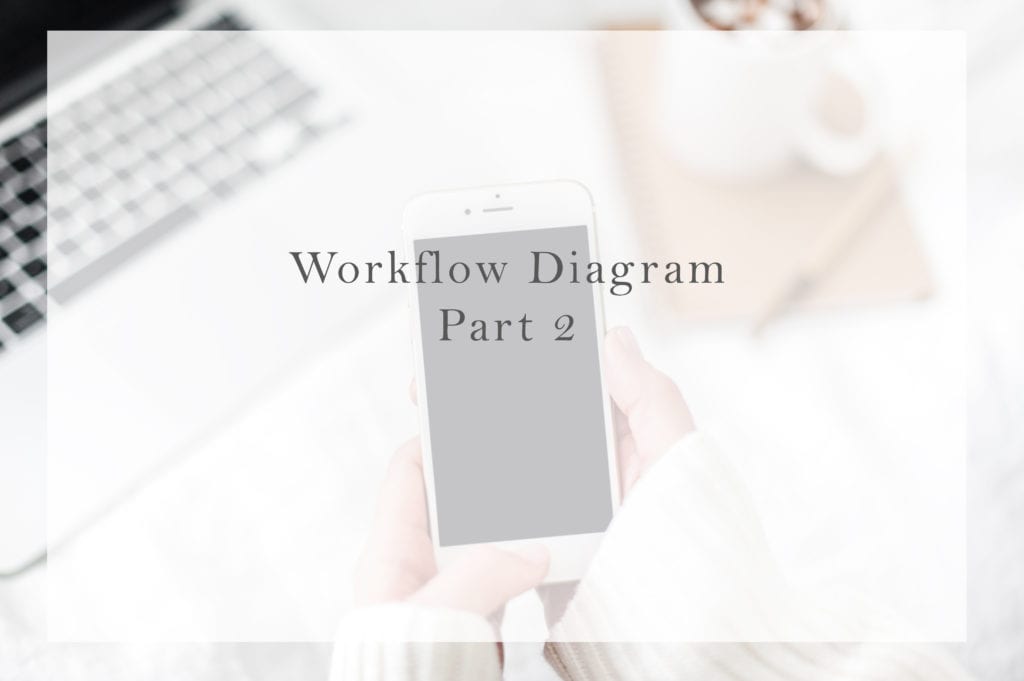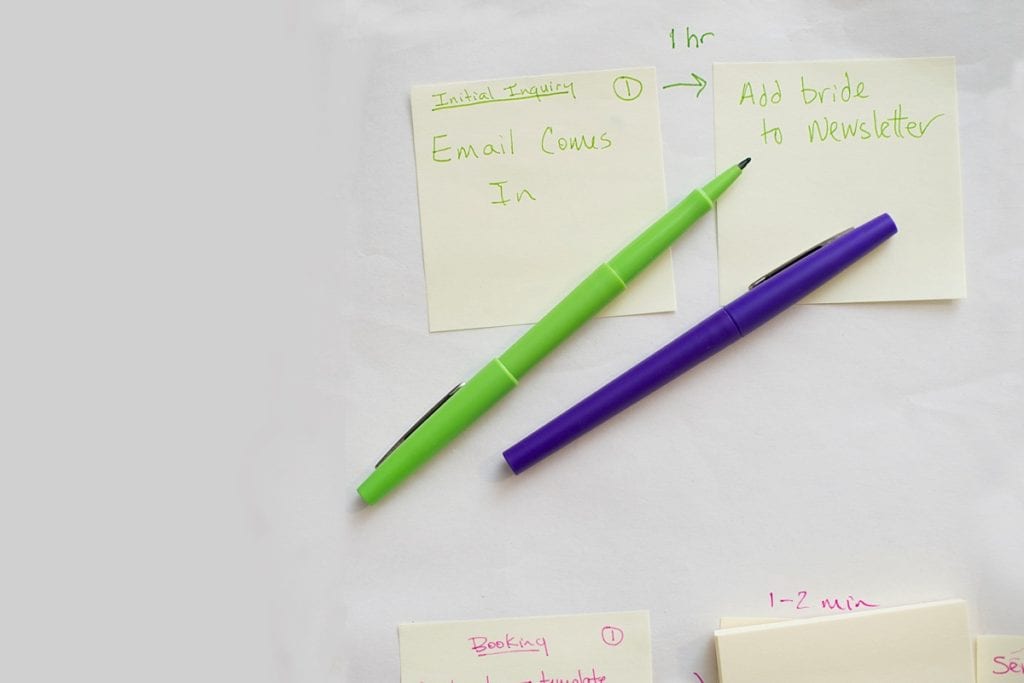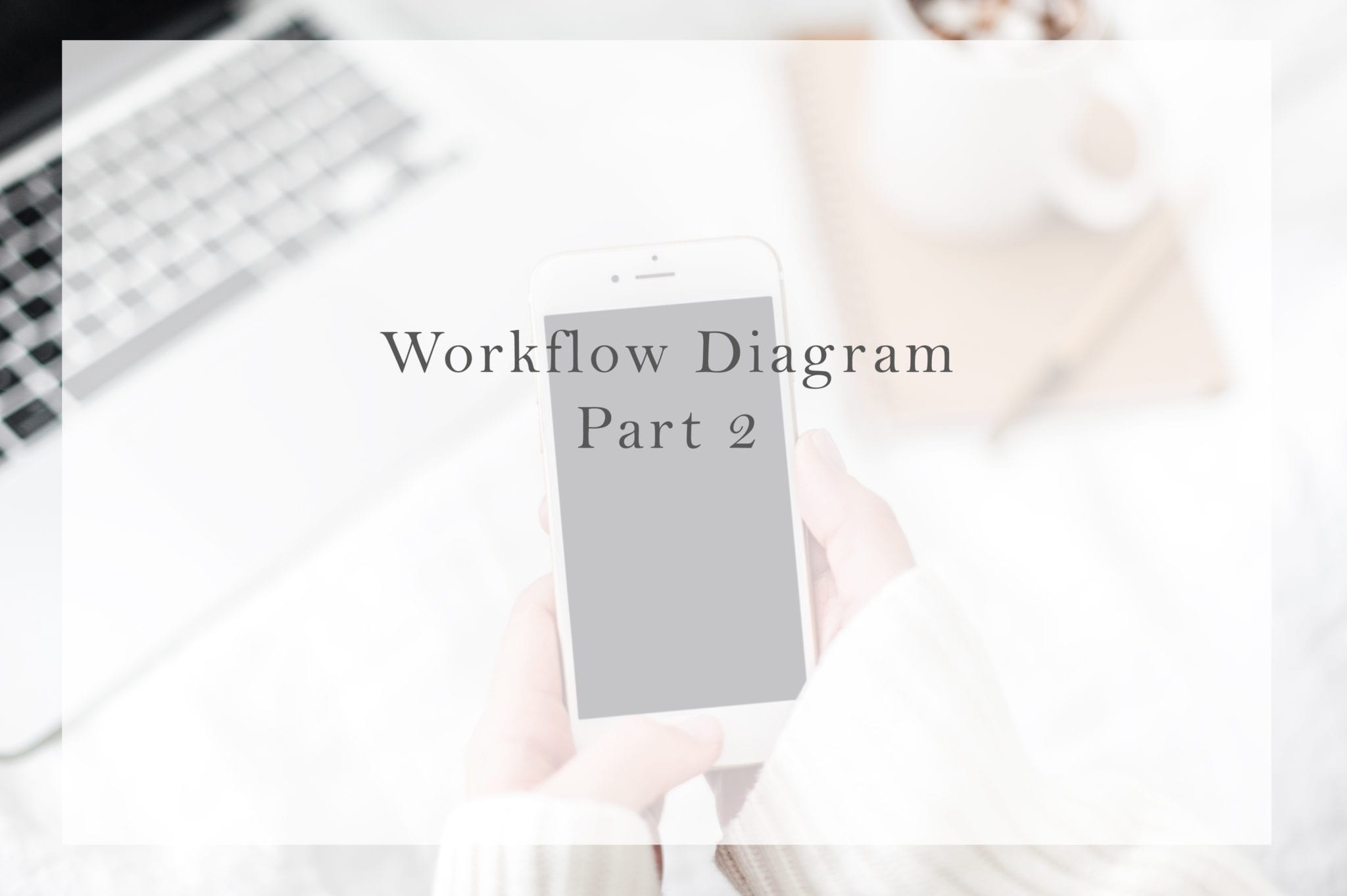 Workflow Diagram
Workflow Diagram
Your current workflow is what you are doing right now at this time. This, for some people, is one of the hardest parts because they have to admit what their process is or lack there of. Don’t be ashamed or embarrassed of your current process. Think of this as your baseline or your starting point. It is not a reflection of your whole business or your values. Before we begin, we will need some supplies for this:
- Roll of butcher block paper (can be found in craft store or IKEA)
- 3 different color sticky note pads
- 3 different color markers
 It sounds like we will be taking a trip back to grade school, but it will make sense a little later. The reason we have all of these supplies is to write your whole process down. In the nursing field we have a saying “if it isn’t written down it isn’t done”. The same applies here, you must take the time and effort to write everything down. So let’s dive in:
It sounds like we will be taking a trip back to grade school, but it will make sense a little later. The reason we have all of these supplies is to write your whole process down. In the nursing field we have a saying “if it isn’t written down it isn’t done”. The same applies here, you must take the time and effort to write everything down. So let’s dive in:
- Lay out your butcher block paper in one long piece. (I usually do about 4 ft long)
- Identify the workflow you want to work on (i.e. client acquisition, post production… pick only one) and its start and end point.
- Make your key on the paper: Each sticky note color corresponds to whose responsibility it is to complete. By making a key you clearly define who does what. It might be you, the client, or your employee just as examples. (if you need more sticky note colors please make sure you have one color for each person or entity involved)
- Take the sticky notes and start marking your process from left to right. This is the meat and potatoes of the whole thing. Write down every step including emails, phone conversations, etc. IMPORTANT: MAKE SURE TO WRITE DOWN EVERYTHING! No I am not screaming, I am over emphasizing. Each sticky note is a step or action. In between each step put a direction arrow to show where the next step in the process is. Once you have this done take a break you’ve earned it.
 Key point is to make sure you are only writing down your current process and not what you want your process to be. Workflows, as you can imagine, can get very complicated. If your workflow needs more attention please contact the restart specialist for a personalized coaching session.
Key point is to make sure you are only writing down your current process and not what you want your process to be. Workflows, as you can imagine, can get very complicated. If your workflow needs more attention please contact the restart specialist for a personalized coaching session.
If you missed the first part of our workflow series then head here to start your workflow process.
Jason is a Arbinger, Spectrum, and Crucial Conversations Coach as well as a workflow specialist.
